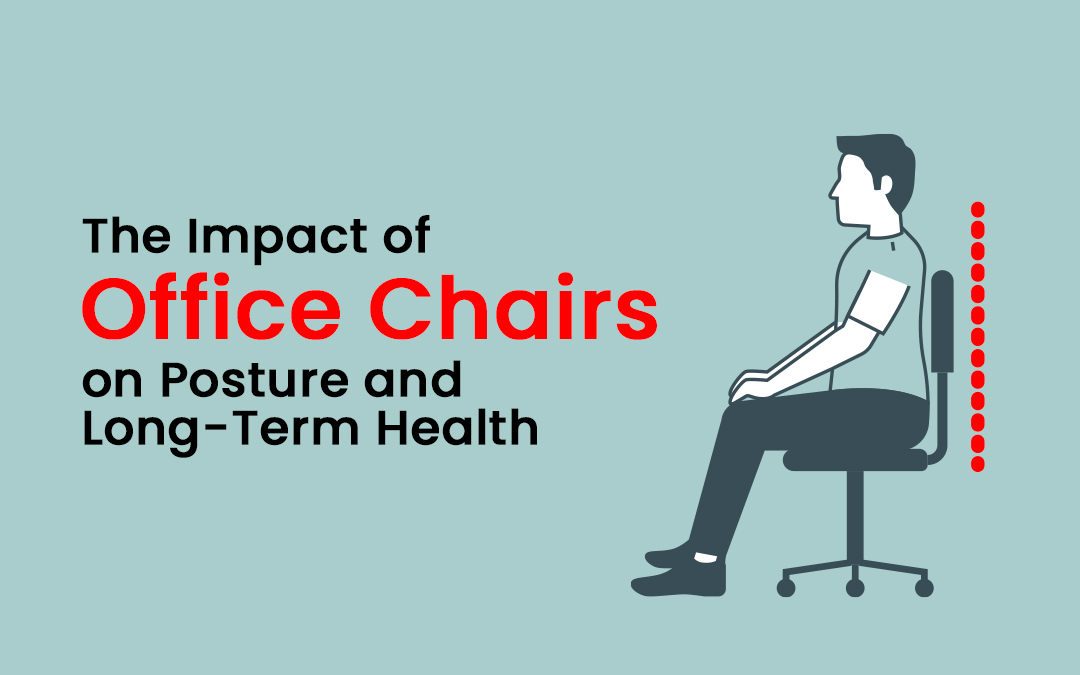
In the modern workplace, where many of us spend hours seated at a desk, the office chair plays a crucial role in our daily lives. However, the impact of office chairs on posture and long-term health is often underestimated. A poorly designed chair can lead to a host of physical problems, while a well-designed ergonomic chair can promote good posture and prevent long-term health issues. This article explores the significant ways in which office chairs influence our posture and overall well-being.
1. The Relationship Between Office Chairs and Posture
Posture refers to the way we hold our bodies while standing, sitting, or lying down. Good posture involves maintaining the natural curves of the spine, with the head, shoulders, and hips aligned. However, the way we sit in our office chairs can drastically affect our posture.
- Spinal Alignment: A chair that lacks proper lumbar support can cause the lower back to slump, leading to poor spinal alignment. Over time, this can result in chronic back pain and increase the risk of developing conditions such as herniated discs or sciatica.
- Forward Head Posture: Without adequate support, many people tend to lean forward while working, especially when using a computer. This forward head posture places excessive strain on the neck and upper back, potentially leading to tension headaches and neck pain.
2. Common Health Issues Associated with Poor Office Chairs
Prolonged use of poorly designed office chairs can lead to several health issues:
- Lower Back Pain: One of the most common complaints, lower back pain often results from inadequate lumbar support and prolonged periods of sitting in a slouched position. Over time, this can lead to more serious conditions like degenerative disc disease.
- Neck and Shoulder Pain: Chairs without proper headrests or adjustable armrests can contribute to tension in the neck and shoulders. This tension can escalate into chronic pain and reduce mobility.
- Circulatory Problems: Sitting for extended periods can impede blood flow, particularly in the lower extremities. This can lead to conditions such as deep vein thrombosis (DVT) and varicose veins. A chair that supports good circulation is essential for long-term health.
- Muscle Degeneration: Sitting for too long without engaging your core muscles can lead to muscle atrophy, particularly in the lower back and abdomen. This muscle degeneration can exacerbate back pain and decrease overall physical fitness.
3. The Role of Ergonomic Chairs in Promoting Health
Ergonomic office chairs are designed to support the body’s natural posture and movements, reducing the risk of the health issues mentioned above. Here’s how they contribute to better posture and long-term health:
- Lumbar Support: An ergonomic chair with adjustable lumbar support helps maintain the natural curve of the spine, reducing the risk of lower back pain and spinal problems.
- Adjustability: Ergonomic chairs offer multiple adjustment options, including seat height, depth, and armrest positioning. These adjustments ensure that the chair fits the user's body perfectly, promoting good posture and reducing strain on the muscles and joints.
- Dynamic Sitting: Many ergonomic chairs are designed to encourage dynamic sitting, allowing the user to move and shift positions throughout the day. This movement prevents muscle stiffness and promotes healthy circulation.
4. The Long-Term Benefits of Using the Right Office Chair
Investing in a high-quality ergonomic office chair can have numerous long-term benefits for your health and productivity:
- Prevention of Chronic Pain: By supporting proper posture, an ergonomic chair can prevent chronic pain in the back, neck, and shoulders. This leads to fewer days off work and a better quality of life.
- Increased Productivity: Comfortable seating allows you to focus better on your work, leading to increased productivity. When you're not distracted by discomfort or pain, you can maintain concentration for longer periods.
- Enhanced Overall Well-being: Good posture supported by an ergonomic chair can improve your mood and energy levels, as you’re less likely to experience the physical and mental fatigue that comes from sitting in a poorly designed chair.
5. Tips for Maintaining Good Posture While Sitting
Even with the best ergonomic chair, maintaining good posture requires awareness and regular adjustments:
- Sit Back in the Chair: Ensure your back is fully supported by the chair's backrest, with your hips positioned as far back as possible.
- Keep Feet Flat: Your feet should rest flat on the floor or on a footrest, with your knees at a 90-degree angle.
- Adjust Armrests: Armrests should be adjusted so that your arms rest comfortably at your sides, with your elbows at a 90-degree angle.
- Take Regular Breaks: Stand up, stretch, and walk around every 30 to 60 minutes to prevent stiffness and promote circulation.
Conclusion
The office chair is more than just a piece of furniture; it plays a pivotal role in maintaining good posture and preventing long-term health issues. By choosing an ergonomic chair and practicing good sitting habits, you can protect your spine, reduce the risk of chronic pain, and enhance your overall well-being. Remember, investing in a quality office chair is an investment in your health—one that can pay off in the form of a more comfortable and productive workday.
Share this post
Leave a comment
All comments are moderated. Spammy and bot submitted comments are deleted. Please submit the comments that are helpful to others, and we'll approve your comments. A comment that includes outbound link will only be approved if the content is relevant to the topic, and has some value to our readers.

Comments (0)
No comment